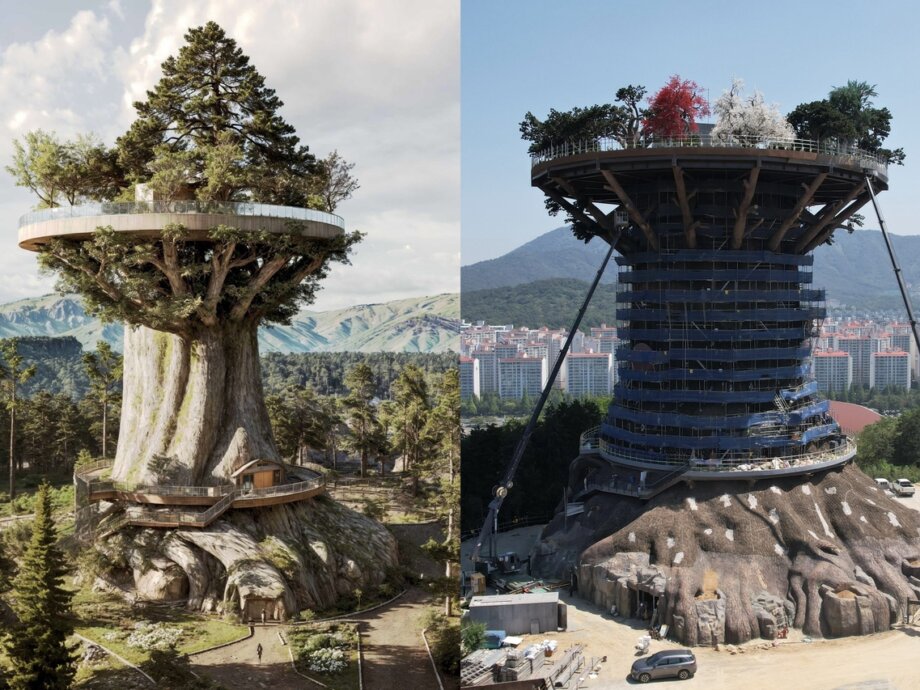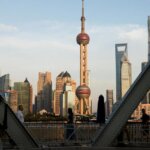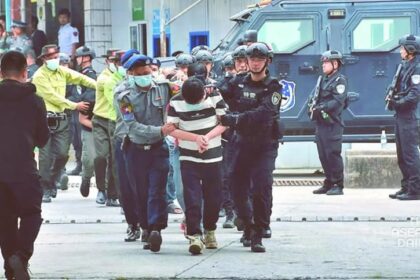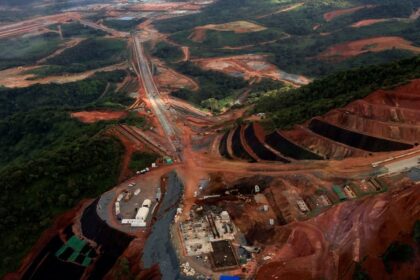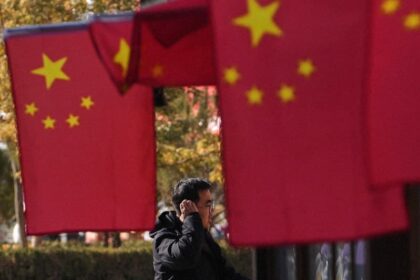The Rise and Controversy of Changwon’s Big Tree Observation Tower
In the southeastern port city of Changwon, South Korea, a bold attempt to create a landmark attraction has instead sparked widespread public criticism and debate. The Big Tree observation tower, a 46.5-meter-tall structure built at a cost of 34.4 billion won (approximately $24.8 million), was envisioned as a transformative centerpiece for Daesang Park. Inspired by the iconic Supertrees of Singapore’s Gardens by the Bay, Changwon’s Big Tree was meant to draw both domestic and international visitors, diversify South Korea’s tourism landscape, and anchor a major urban redevelopment project. Yet, as the tower nears completion, many residents and observers are voicing disappointment, calling the project a costly misstep that fails to live up to its lofty ambitions.
- The Rise and Controversy of Changwon’s Big Tree Observation Tower
- What Was the Vision Behind the Big Tree?
- Why Did Public Backlash Erupt?
- How Did the Project Go Off Track?
- What Is the Broader Context for Public Art and Landmarks in Changwon?
- What Happens Next? The City’s Response and Future Plans
- Lessons from the Big Tree: Urban Development, Public-Private Partnerships, and Civic Engagement
- In Summary
What Was the Vision Behind the Big Tree?
Changwon, with a population just over one million, is an industrial and shipping hub near the southeastern tip of the Korean Peninsula. In 2022, it was designated a “special city” under South Korean law, granting it greater autonomy over development projects. City officials hoped the Big Tree would become a signature tourist attraction, helping to address the country’s long-standing issue of tourism being heavily concentrated in Seoul. According to the Korea Culture and Tourism Institute, 78 percent of foreign visitors in 2024 spent time in the capital, while only 16.5 percent visited Busan, 11.2 percent Gyeonggi Province, and 10.9 percent Jeju Island.
The Big Tree was designed as the centerpiece of Daesang Park, a public-private partnership (PPP) project valued at about 1 trillion won ($720 million). Under this model, a private developer agreed to build most of the park’s facilities—including the Big Tree—and transfer them to the city, while retaining about 12.7 percent of the site for a 1,779-unit apartment complex and other revenue-generating properties. This approach was partly a response to South Korea’s “urban park sunset law” of 2020, which aimed to prevent undeveloped urban parkland from being lost to private use by encouraging municipalities to secure park facilities through PPPs.
City planners drew inspiration from Singapore’s Supertrees, hoping to create a similarly iconic structure that would offer panoramic views of Masan Port, Dotseom Island, and Muhaksan mountain. The tower was also expected to serve as a symbol of Changwon’s aspirations to become a more vibrant, culturally significant city.
Why Did Public Backlash Erupt?
Despite the grand vision, the reality of the Big Tree has fallen short for many residents. As construction neared completion, local media and citizens began to voice their disappointment with the tower’s appearance and execution. The most common criticisms include:
- Unimpressive Design: The tower’s squat proportions and sparse artificial foliage have been described as underwhelming and unfinished, especially when compared to the lush, futuristic Supertrees of Singapore.
- Artificial Aesthetics: Interior plant sculptures and decorative elements were criticized for looking obviously fake, with only a few realistic faux plants drawing brief curiosity.
- Incongruous Decorations: The inclusion of decorative animal statues and other features struck many as out of place and lacking cohesion.
- Deviation from Original Plans: Safety concerns led to significant design changes, including the removal of a planned 20-meter-high central tree and most smaller artificial trees, resulting in a structure that many feel is a pale imitation of the original concept.
Local media reports and citizen commentary have been scathing. One Changwon resident, interviewed by a regional newspaper, summed up the sentiment:
“We were promised a beautiful landmark, but what we got looks unfinished and artificial. It’s disappointing, especially given how much money was spent.”
According to mk.co.kr, the city’s acting mayor, Jang Geum-yong, acknowledged the criticism and promised to seek citizen input for improvements:
“We will come up with supplementary measures to reflect the opinions of citizens.”
How Did the Project Go Off Track?
The Big Tree’s troubled journey from concept to reality highlights the challenges of ambitious public art and landmark projects. Initially, the tower was to be a soaring, tree-like structure with abundant artificial foliage and a dramatic central “trunk.” However, during the design and review process, safety concerns—particularly regarding vulnerability to natural disasters—prompted the city’s Landscape Review Committee to demand changes. The planned 20-meter-high central tree was scrapped, and most smaller artificial trees were eliminated. The result was a more cylindrical, less visually striking structure that many now see as a compromise rather than a bold statement.
Such design changes are not uncommon in large-scale public projects, especially when safety, budget, and regulatory concerns collide with creative ambitions. However, the gap between the initial renderings and the finished product has fueled public frustration, with some citizens derisively referring to the tower as a “demotri” (a portmanteau of “demolition” and “tree”) or “drumphon” (a play on “drum” and “phone,” suggesting a hollow or pointless object).
Adding to the controversy, the city’s decision to benchmark Singapore’s Supertrees—a globally recognized and much-loved attraction—set expectations high. The Supertrees are not only visually stunning but also serve as vertical gardens and environmental engines, integrating solar panels and rainwater collection systems. In contrast, Changwon’s Big Tree has been criticized for lacking both the ecological function and the aesthetic impact of its inspiration.
What Is the Broader Context for Public Art and Landmarks in Changwon?
Changwon is no stranger to ambitious public art and cultural projects. The city hosts the Changwon Sculpture Biennale, the largest recurring sculpture exhibition in South Korea, which brings together international artists to explore the intersection of art, science, and society. The 2022 Biennale, for example, featured installations that engaged with themes of light, matter, and the environment, fostering creative exchanges between artists and the local community.
Such events demonstrate Changwon’s commitment to cultural innovation and its desire to position itself as more than just an industrial hub. However, the Big Tree controversy reveals the challenges of translating artistic ambition into successful, widely embraced public landmarks. While the Biennale’s temporary installations are often celebrated for their creativity and engagement, permanent structures like the Big Tree face higher stakes and greater scrutiny.
Public art and landmark projects can play a vital role in shaping a city’s identity, attracting visitors, and fostering civic pride. Yet, they also risk becoming symbols of waste or mismanagement if they fail to resonate with the public or deliver on their promises. The Big Tree’s fate underscores the importance of transparent planning, community involvement, and realistic expectations in such endeavors.
What Happens Next? The City’s Response and Future Plans
In response to the backlash, Changwon officials have announced plans to redesign the Big Tree’s upper structure. The redesign will be selected through a nationwide competition and citizen consultations, with the goal of creating a more appealing and meaningful landmark. However, the process is expected to take at least a year, and construction on the revised design may not begin until the second half of 2026.
To address immediate concerns and encourage public engagement, the city has decided not to charge an entry fee when the tower begins official operations on October 1. This move is intended to make the attraction more accessible and to gather feedback from visitors, which will inform the redesign process.
Meanwhile, other elements of the Daesang Park development are also facing challenges. The “Mom’s Free Zone”—a 5,000-square-meter facility intended as a safe, indoor space for mothers and children—remains an empty shell, with no clear plan for its contents or operator. Originally conceived as a response to public concerns over fine dust pollution, the facility was supposed to offer play areas, lounges, and cultural spaces for young families. However, nearly five years after its proposal, the building sits unused, and the city has extended the completion deadline to February 2026, long after the adjacent apartment complex opens.
Lessons from the Big Tree: Urban Development, Public-Private Partnerships, and Civic Engagement
The Big Tree saga offers important lessons for cities across South Korea and beyond. As urban areas seek to reinvent themselves and attract visitors, the pressure to deliver iconic landmarks and ambitious redevelopment projects is intense. Public-private partnerships, like the one used for Daesang Park, can unlock new resources and accelerate development, but they also introduce complexities and competing interests.
One key takeaway is the importance of meaningful public engagement throughout the planning and design process. While Changwon officials have now pledged to involve citizens in the redesign of the Big Tree, earlier and more substantive consultation might have helped align the project with community expectations and avoided some of the current backlash.
Another lesson is the need for transparency and accountability in the use of public funds. Large-scale projects that fail to deliver on their promises can erode public trust and fuel cynicism about government and development. Clear communication about project goals, constraints, and changes is essential to maintaining public support.
Finally, the Big Tree controversy highlights the challenges of benchmarking international icons without fully adapting them to local contexts. While inspiration from successful projects abroad can be valuable, direct imitation can backfire if the result lacks the unique qualities or functions that made the original a success.
In Summary
- The Big Tree observation tower in Changwon was intended as a landmark attraction but has faced widespread public criticism for its design and execution.
- Inspired by Singapore’s Supertrees, the tower cost 34.4 billion won ($24.8 million) and was built as part of a larger public-private redevelopment project.
- Residents have criticized the tower’s artificial appearance, sparse foliage, and deviation from original plans, prompting the city to announce a redesign process.
- The controversy underscores the challenges of ambitious public art projects, the importance of community engagement, and the risks of benchmarking international icons without local adaptation.
- Changwon officials plan to involve citizens in the redesign and have made the tower free to visit when it opens, aiming to rebuild public trust and create a more meaningful landmark in the future.


